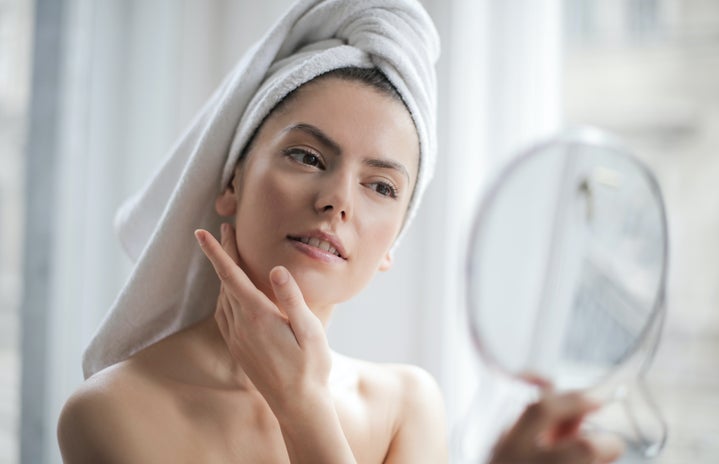Have you done a self-breast exam recently?
In order to look and feel your best, it is important to routinely check your body, including your breasts. A monthly breast self-exam will allow you to quickly become familiar with your body so that you can detect something that is not meant to be there. In this case, prevention is key!
According to the Adolescent and Young Adult Oncology Progress review group, around 70,000 people are diagnosed with cancer every year between the ages of 15 and 39. Breast cancer makes up 15% of these diagnoses. While younger women are less likely to have breast cancer, there is still a risk that requires your attention. Monthly breast self-exams will not only push you to become more familiar with your body, but can also allow you to detect something much sooner than it would otherwise be found.
So, how do you go about a breast self-exam? It is actually quite simple. To start, stand in front of a mirror with your shoulders back and your arms on your hips. You should look for anything that is out of the ordinary. This includes any swelling, dimpling, redness, soreness, rash, swelling, or any abnormality with your nipples. Upon concluding your search, raise your arms above your head and repeat the following steps.
Following your check in the mirror, it is important to feel your breasts while lying on a flat surface. A bed is a perfect location. While lying down, feel the opposite breast with each hand, (left hand to right breast and right hand to left breast). Use a firm three-finger touch to feel your breast in a circular motion, about the size of a quarter. Continue until you feel the entirety of your breast. Most women find it helpful to follow a pattern, like starting at the nipple and moving outward in circular motions.
Finally, conclude your self breast-exam by standing up. Many women find it easiest to do this in the shower, (you can also make this a routine practice). Repeat the same steps as you did lying down, this time with one arm up. For example, hold your right arm up and then check your right breast using your left hand. Repeat on the opposite hand. If you conclude this exam and did not find any abnormal lumps or bumps, you are good to go! If you do find anything, be sure to follow-up with your gynecologist or primary care doctor.
Be in charge of your health and make breast self-exams a routine!


